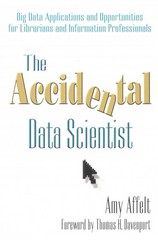Question
4.summarize each type of DBMS in 12 sentences what makes it different from the others. (1) Hierarchical DBMSs were one of the first DBMS types
4.summarize each type of DBMS in 12 sentences what makes it different from the others.
(1) Hierarchical DBMSs were one of the first DBMS types developed, and adopt a tree-like data model. The DML is procedural and record-oriented. No query processor is included. The definitions of the logical and internal data model are intertwined, which is not desirable from a usability, efficiency, or maintenance perspective. Popular examples are IMS from IBM and the Registry in Microsoft Windows.
(2)Network DBMSs use a network data model, which is more flexible than a tree-like data model. One of the most popular types are CODASYL DBMSs, which implement the CODASYL data model. Again, the DML is procedural and record-oriented, and no query processor is available. Consequently, the definitions of the logical and internal data models are also intertwined.Popular examples are CA-IDMS from Computer Associates, UDS from Siemens Nixdorf, DMS 1100 from Unisys, and Image from HP. Both hierarchical and CODASYL DBMSs are legacy database software.
(3)Relational DBMSs (RDBMSs) use the relational data model and are the most popular in the industry. They typically use SQL for both DDL and DML operations. SQL is declarative and set oriented. A query processor is provided to optimize and execute the database queries. Data independence is available thanks to a strict separation between the logical and internal data model. This makes it very attractive to develop powerful database applications. Popular examples are MySQL, which is open-source and maintained by Oracle, the Oracle DBMS also provided by Oracle, DB2 from IBM, and Microsoft SQL Server from Microsoft.
(4)Object-oriented DBMSs (OODBMSs) are based upon the object-oriented data model. An object encapsulates both data (also called variables) and functionality (also called methods). When combining an OODBMS with an object-oriented programming language (e.g., Java, Python), there is no impedance mismatch since the objects can be transparently stored and retrieved from the database. Examples of OODBMSs are db4o, which is an open-source OODBMS maintained by Versant, Cache from Intersystems, and GemStone/S from GemTalk Systems. OODBMSs are not very popular in the industry, beyond some niche markets, due to their complexity.
(5)An object-relational DBMS (ORDBMS), also commonly called an extended relational DBMS (ERDBMS), uses a relational model extended with object-oriented concepts, such as user-defined types, user-defined functions, collections, inheritance, and behavior. Hence, an ORDBMS/ERDBMS shares characteristics with both an RDBMS and an OODBMS. As with pure relational DBMSs, the DML is SQL, which is declarative and set oriented. A query processor is available for query optimization. Most relational DBMSs such as Oracle, DB2, and Microsoft SQL Server incorporate object-relational extensions.
(6)XML DBMSs use the XML data model to store data. XML is a data representation standard. XML is a very popular standard to exchange data between various applications. Native XML DBMSs (e.g., BaseX, eXist) store XML data by using the logical, intrinsic structure of the XML document. More specifically, they map the hierarchical or tree structure of an XML document to a physical storage structure. XML-enabled DBMSs (e.g., Oracle, IBM DB2) are existing RDBMSs or ORDBMSs that are extended with facilities to store XML data and structured data in an integrated and transparent way. Both types of DBMSs also provide facilities to query XML data.
(7)NoSQL DBMSs: Finally, the last few years brought us a realm of new database technologies targeted at storing big and unstructured data. These are often referred to using the umbrella term not-only SQL (NoSQL) databases with popular examples such as Apache Hadoop or Neo4j. As we explain in Chapter 11, NoSQL databases can be classified according to data model into keyvalue stores, tuple, or document stores, column-oriented databases, and graph databases. However, even within such subcategories, the heterogeneity of the members is quite high. The common denominator of all NoSQL databases is that they attempt to make up for some shortcomings of
Step by Step Solution
There are 3 Steps involved in it
Step: 1

Get Instant Access to Expert-Tailored Solutions
See step-by-step solutions with expert insights and AI powered tools for academic success
Step: 2

Step: 3

Ace Your Homework with AI
Get the answers you need in no time with our AI-driven, step-by-step assistance
Get Started


